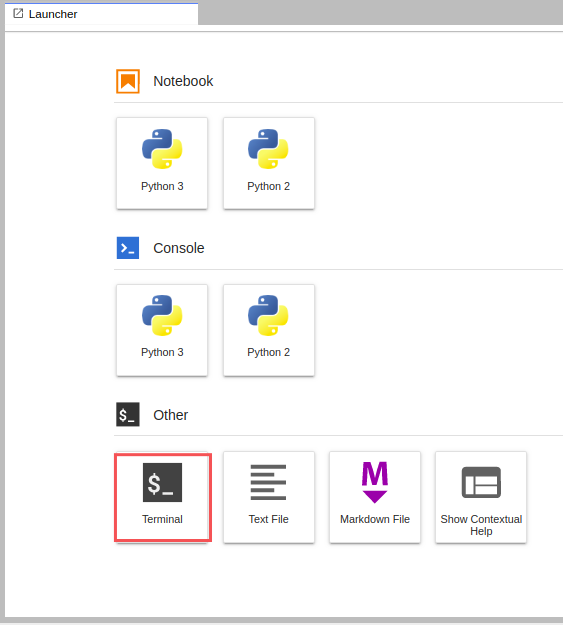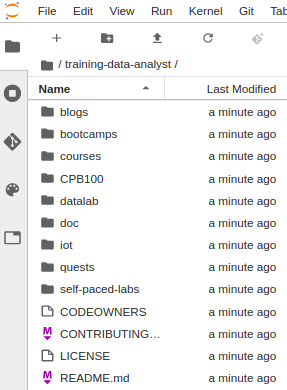检查点
Launch AI Platform Notebooks
/ 50
Clone course repo within your AI Platform Notebooks instance
/ 50
Predict Baby Weight with TensorFlow on AI Platform
GSP013
Overview
In this lab you train, evaluate, and deploy a machine learning model to predict a baby's weight. You then send requests to the model to make online predictions.
What you'll learn
In this lab, you:
- Launch a Vertex AI Workbench.
- Carry out local training.
- Carry out distributed training.
- Deploy the ML model as a web service.
- Make predictions with the model.
Setup
Before you click the Start Lab button
Read these instructions. Labs are timed and you cannot pause them. The timer, which starts when you click Start Lab, shows how long Google Cloud resources will be made available to you.
This hands-on lab lets you do the lab activities yourself in a real cloud environment, not in a simulation or demo environment. It does so by giving you new, temporary credentials that you use to sign in and access Google Cloud for the duration of the lab.
To complete this lab, you need:
- Access to a standard internet browser (Chrome browser recommended).
- Time to complete the lab---remember, once you start, you cannot pause a lab.
How to start your lab and sign in to the Google Cloud console
-
Click the Start Lab button. If you need to pay for the lab, a pop-up opens for you to select your payment method. On the left is the Lab Details panel with the following:
- The Open Google Cloud console button
- Time remaining
- The temporary credentials that you must use for this lab
- Other information, if needed, to step through this lab
-
Click Open Google Cloud console (or right-click and select Open Link in Incognito Window if you are running the Chrome browser).
The lab spins up resources, and then opens another tab that shows the Sign in page.
Tip: Arrange the tabs in separate windows, side-by-side.
Note: If you see the Choose an account dialog, click Use Another Account. -
If necessary, copy the Username below and paste it into the Sign in dialog.
{{{user_0.username | "Username"}}} You can also find the Username in the Lab Details panel.
-
Click Next.
-
Copy the Password below and paste it into the Welcome dialog.
{{{user_0.password | "Password"}}} You can also find the Password in the Lab Details panel.
-
Click Next.
Important: You must use the credentials the lab provides you. Do not use your Google Cloud account credentials. Note: Using your own Google Cloud account for this lab may incur extra charges. -
Click through the subsequent pages:
- Accept the terms and conditions.
- Do not add recovery options or two-factor authentication (because this is a temporary account).
- Do not sign up for free trials.
After a few moments, the Google Cloud console opens in this tab.

Activate Cloud Shell
Cloud Shell is a virtual machine that is loaded with development tools. It offers a persistent 5GB home directory and runs on the Google Cloud. Cloud Shell provides command-line access to your Google Cloud resources.
- Click Activate Cloud Shell
at the top of the Google Cloud console.
When you are connected, you are already authenticated, and the project is set to your Project_ID,
gcloud is the command-line tool for Google Cloud. It comes pre-installed on Cloud Shell and supports tab-completion.
- (Optional) You can list the active account name with this command:
- Click Authorize.
Output:
- (Optional) You can list the project ID with this command:
Output:
gcloud, in Google Cloud, refer to the gcloud CLI overview guide.
Enable the Recommended APIs
- In the Google Cloud Console, on the Navigation menu, click Vertex AI > Dashboard.
- Click Enable All Recommended API.
- In the Google Cloud Console, on the Navigation menu, click APIs & Services > Library.
- Search for AI Platform Training & Prediction API and click on it.
- Click Enable.
Task 1. Create the bucket
Create a bucket using the Google Cloud console:
-
In your Cloud Console, click on the Navigation menu, and select Cloud Storage.
-
Click on Create bucket.
-
Choose a Regional bucket and set a unique name (use your project ID because it is unique).
-
Click Create.
-
If prompted for
Enforce public access prevention on this bucket, click Confirm.
Task 2. Launch Vertex AI Workbench
To create and launch a Vertex AI Workbench notebook:
-
In the Navigation Menu
, click Vertex AI > Workbench.
-
On the Workbench page, click Enable Notebooks API (if it isn't enabled yet).
-
Click on User-Managed Notebooks tab then, click Create New.
-
Name the notebook.
-
Set Region to
and Zone to . -
In the New instance menu, choose the latest version of TensorFlow Enterprise 2.11 in Environment.
-
Click Advanced Options to edit the instance properties.
-
Click Machine type and then select e2-standard-2 for Machine type.
-
Leave the remaining fields at their default and click Create.
After a few minutes, the Workbench page lists your instance, followed by Open JupyterLab.
- Click Open JupyterLab to open JupyterLab in a new tab. If you get a message saying beatrix jupyterlab needs to be included in the build, just ignore it.
Click Check my progress to verify the objective.
Task 3. Clone the course repo
To clone the training-data-analyst repository in your JupyterLab instance:
- In JupyterLab, click the Terminal icon to open a new terminal.
- At the command-line prompt, type the following command and press ENTER:
- To confirm that you have cloned the repository, in the left panel, double click the
training-data-analystfolder to see its contents.
Task 4. Execute training and prediction jobs
-
In the notebook interface, navigate to training-data-analyst > blogs > babyweight and open train_deploy.ipynb.
-
From the menu, click Edit > Clear All Outputs.
-
From the top right corner, make sure you're using the Python 3 kernel.
-
Read the narrative and click Shift + Enter (or Run) on each cell in the notebook.
Task 5. Test your knowledge
Test your knowledge about Google Cloud Platform by taking this quiz.
Congratulations!
You learned how to train, evaluate, and deploy a machine learning model in Cloud Datalab.
Finish your quest
This self-paced lab is part of the Scientific Data Processing and Data Engineering quests. A quest is a series of related labs that form a learning path. Completing a quest earns you a badge to recognize your achievement. You can make your badge or badges public and link to them in your online resume or social media account. Enroll in any quest that contains this lab and get immediate completion credit. See the Google Cloud Skills Boost catalog to see all available quests.
Take your next lab
Continue your quest with BigTable: Qwik Start -Hbase Shell, or try the Google Cloud Skills Boost lab Predict Taxi Fare with BigQuery ML Forecasting Model.
Google Cloud training and certification
...helps you make the most of Google Cloud technologies. Our classes include technical skills and best practices to help you get up to speed quickly and continue your learning journey. We offer fundamental to advanced level training, with on-demand, live, and virtual options to suit your busy schedule. Certifications help you validate and prove your skill and expertise in Google Cloud technologies.
Manual Last Updated October 30, 2023
Lab Last Tested October 31, 2023
Copyright 2024 Google LLC All rights reserved. Google and the Google logo are trademarks of Google LLC. All other company and product names may be trademarks of the respective companies with which they are associated.


